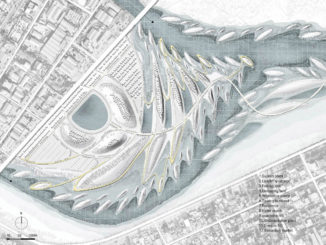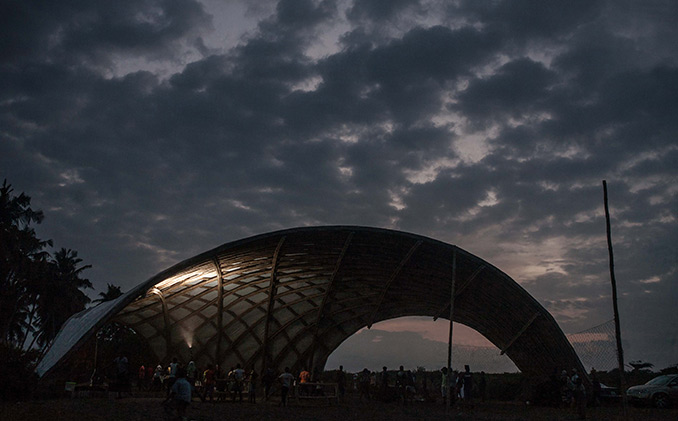
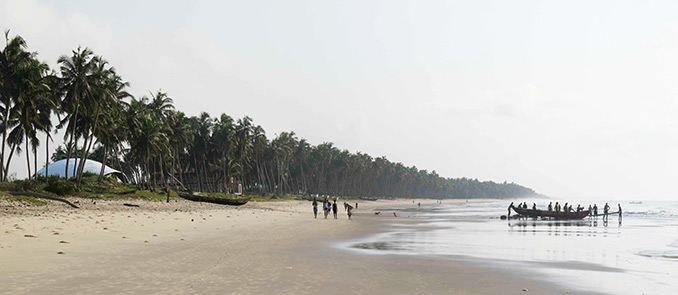
The arts as means of empowerment is the core philosophy of the Haduwa Arts and Culture Institute in Apam, Ghana, a meeting place of local, national and international artists. The approach is apparent even in the institute’s spatial design process. The interdisciplinary group of students of [applied] Foreign Affairs based at the University of applied Arts, Vienna worked together with the students of performing arts of Lab DC based at the University of Ghana and involved local inhabitants – fishermen, carpenters and market women.


Shadows – friends, trusted friends
When artists and spatial designers explore a site together and discuss their visions of staging, they are not only sketching and drawing but also performing and dancing in order to understand the site, its requirements and its relation to the human body. On a site, where fishermen pull their nets every day, and performances need sun and wind-protection, cultural routine has marked its spaces and created spatial borders. Invisible relations and temporary adaptations influence the space to the same extent as physical objects. Shade from the palm trees and the transient passers-by add liveliness.
A fine line between the water and the sky
Apam is a fishing town, where the land meets the sea, where the sea meets the sky. As a site opposite the horizon, it has no border, no limit. In a country with a huge social gap, artistic expression opens up new perspectives also to socially and economically disadvantaged groups. Haduwa, the name of the institute, is a Hausa word for coming together. The institute aims to grow step by step. Its core and starting point is a stage, followed by small artist-in-residence units. In the future, a Montessori kindergarten is planned. Haduwa intends to produce the necessary food and power on site and to use mainly natural building materials. The stage is called Apata, which is Akan for canopy or shelter. Its design functions as a spatial marker that does not predefine but enables various forms of usage: a roof with three openings.
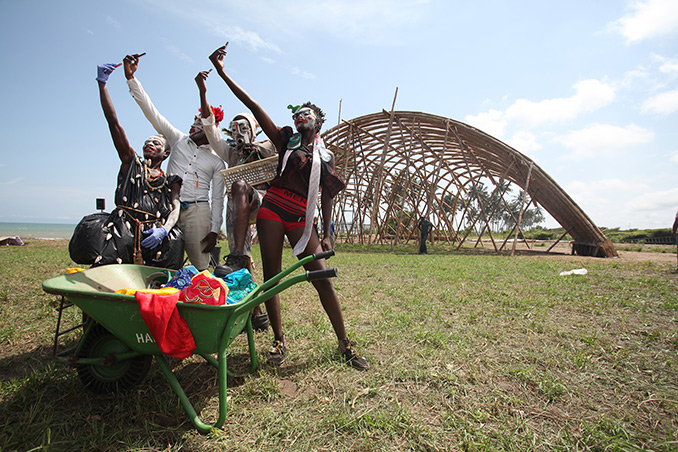
A skeleton of a whale as big as a ship
Bambusa vulgaris is common in the South of Ghana; building with it is not. The giant grass especially grows on areas formerly covered with rainforest, and here it prevents big trees from growing back. In order to build the stage of the Haduwa Arts and Culture Institute – a shape without straight lines, a roof without columns – only curved bamboo was selected in the forest. Local inhabitants and regional carpenters had to be trained to treat the bamboo in a locally suitable and ecologically friendly way with borax. Adequate joints were created without metal elements, as these would corrode quickly in the salty ocean climate. The resulting primary structure is a grid shell made solely from bamboo and rope, roofed with a white truck tarpaulin cover – looking like a sail, relating to the land, the sea, the town of Apam, and the people living here.
The whole atmosphere is salty – endless
The building process was not without its difficulties. Details had to be developed on site. Land ownership tensions between regional politics and local inhabitants arose; and the financial and infrastructural situation was challenging. Furthermore, a diverse transdisciplinary and multicultural team had to be coordinated. The finished roof of the stage of the Haduwa Arts and Culture Institute was in many respects taken as a role model and awarded with the Helmut Richter Award in 2015 and the Energy Globe Award for Ghana in 2016, for its structural solution, ecological way of building and transdisciplinary cooperation. But it is rarely acknowledged that this project is the outcome of a long process with several difficult moments and uncertainties, without which it would never have reached its significance – the significance of a landmark that highlights the infinite row of palm trees in a moon-shaped bay, that reinvents the local image of building with bamboo, and that is flexible, being able to host performances, meetings and rehearsals or just giving fishermen a place to rest.
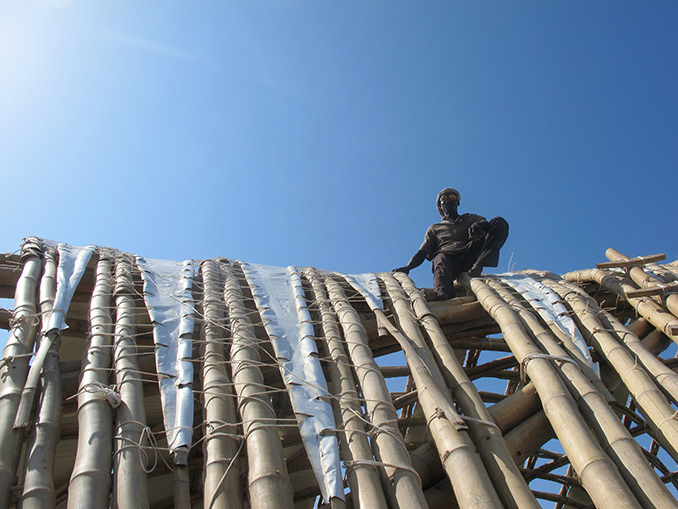
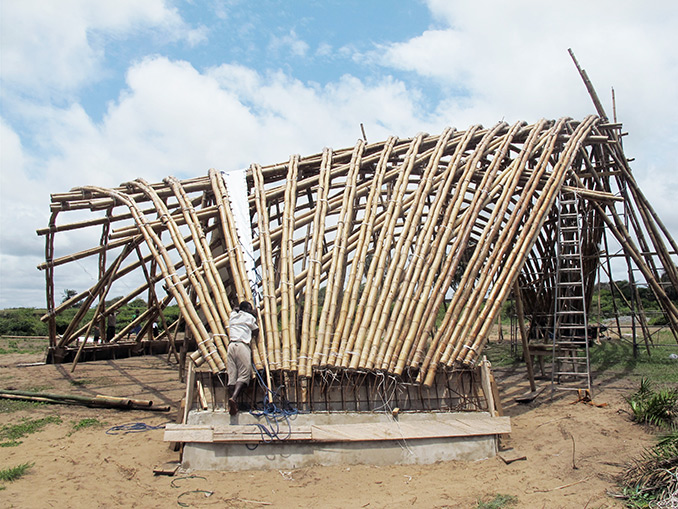
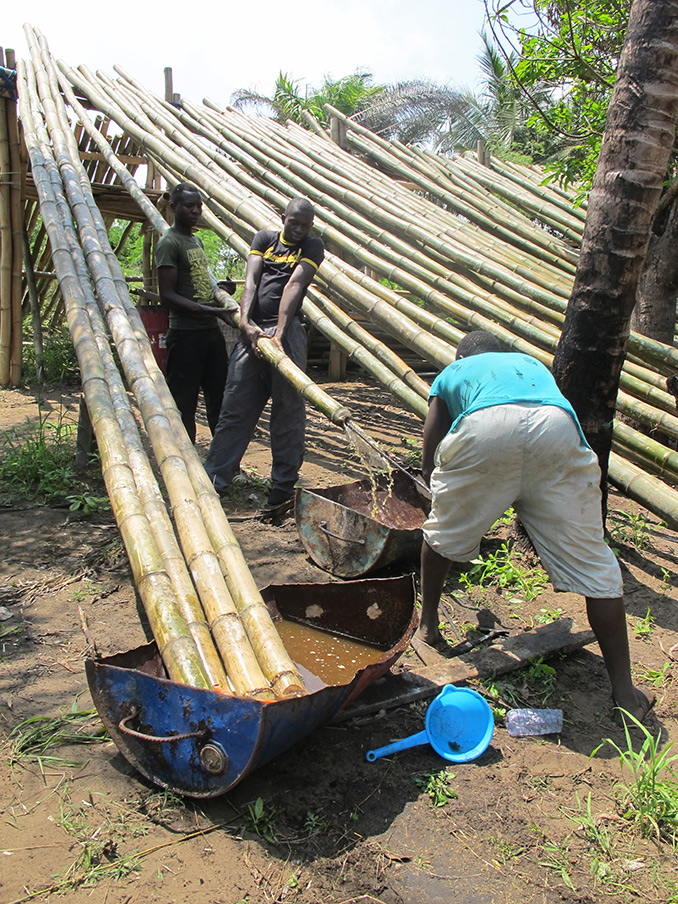
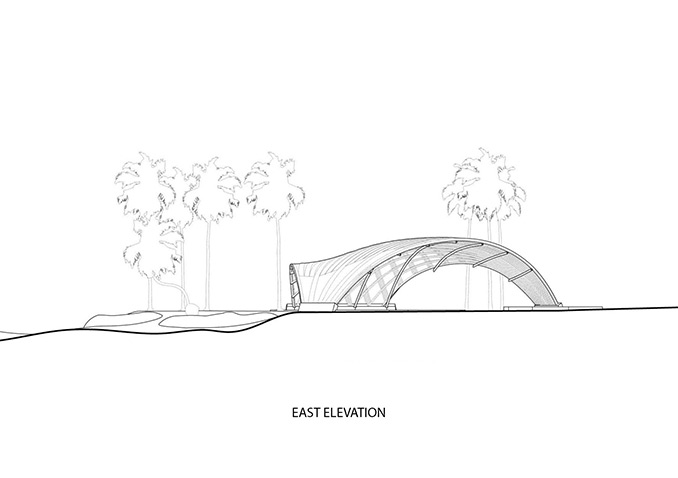
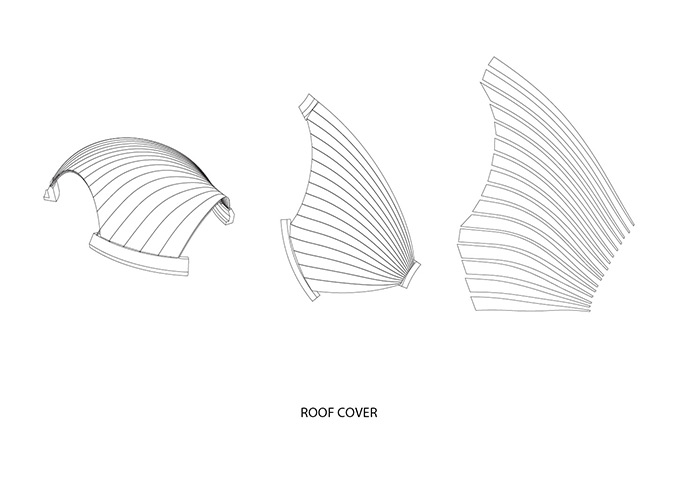
Design and realisation by [applied] Foreign Affairs | Chrili Car, Joseph Hofmarcher, Ilias Klis, Joana Lazarova, Ewa Lenart, Ioana Petkova, Philipp Reinsberg with Antonella Amesberger, Andrea Sachse, Jürgen Strohmayer, supervised by Baerbel Mueller
Consultants | Jörg Stamm (bamboo building), Klaus Bollinger, Bollinger-Grohman-Schneider (structure), Franz Sam (construction), Christoph Kaltenbrunner (roofing), Manora Auersperg, tex (textile design), Daniel Aschwanden (social design)
Client | Haduwa Arts and Culture Institute, coordinated by Petra Kron
Sponsor | Engagement Global NRW, German Embassy Accra, University of applied Arts, Vienna
Text | Chrili Car, intertitles taken from his mapping project “shadows – friends, trusted friends” about on-site-experiences of artists, architects and local inhabitants as a starting point for the design
Photos | Desire Clarke, Daniel Aschwanden, Chrili Car
Drawings, plans | [applied] Foreign Affairs

